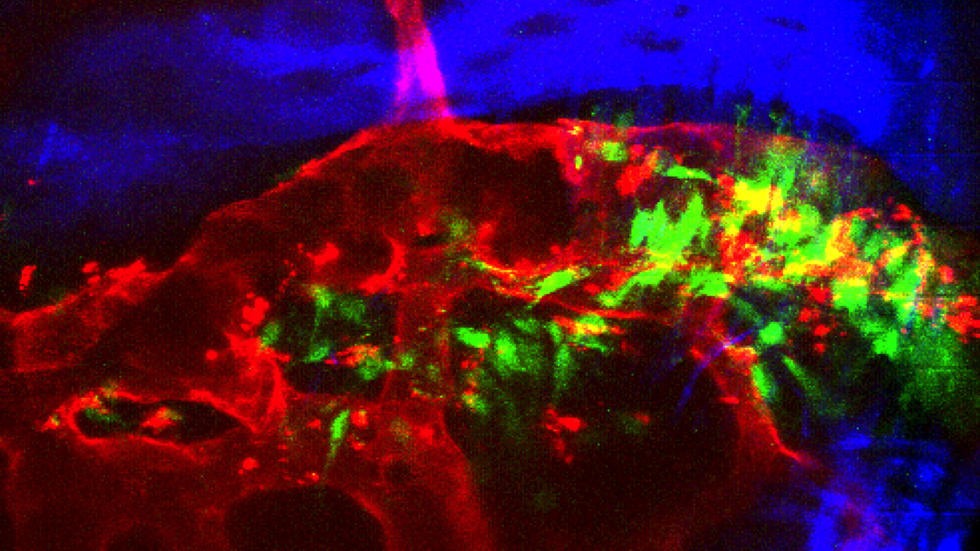
Researchers find a population of skeletal stem cells in mice that when transplanted regrow bone
Adapted from Harvard School of Dental Medicine press release
A recent research finding published in Stem Cell Reports could potentially lead to therapies that address craniofacial malformations in children. Craniofacial malformations are deformities that affect a child’s head and facial bones—disorders, such as cleft palate or craniosynostosis, that are present at birth.
The Intini Laboratory “intinilab” led by Dr. Giuseppe Intini, assistant professor of Oral Medicine, Infection, and Immunity at the Harvard School of Dental Medicine, and principal faculty member of the Harvard Stem Cell Institute, studied skeletal stem cells found in the skull and bones of the head (calvarial bone). As the skull forms to protect the brain, the sutures (or fibrous joints) of the skull remain an active site of bone formation during post-natal development. Studying a post-natal cell population of calvarial bone in mice, Intini’s team learned that skeletal stem cells expressing PRX1 live exclusively in the skulls suture niches, decrease in number with age, and are required for bone regeneration. Further, they discovered that upon transplantation the cells are able to regenerate bone. Additional investigation of these cells could lead to novel and more effective therapeutic strategies for treatment of craniofacial malformations.
“My laboratory has worked intensely on this project for few years. Thanks to the efforts of my team of investigators and collaboration with Dr. Charles Lin from Massachusetts General Hospital, we have been able to characterize the role of PRX1 expressing cells during post-natal life,” Dr. Intini said. “Harnessing these cells for better regenerative therapies in humans is a challenge that lies in front of us. In collaboration with the surgeons at Boston Children Hospital we are ready to tackle it.”
In the next phase of his research, Dr. Intini is collaborating with plastic surgeons and neurosurgeons at the Boston Children's Hospital, to translate this finding into cell-targeting strategies for better cranioplastic approaches in children with craniofacial malformations.
“This is an exciting research project and we are looking forward to this collaboration,” said Dr. John Meara, plastic surgeon-in-chief at Boston Children’s Hospital, and Kleitjian Professor of Global Surgery at Harvard Medical School.
